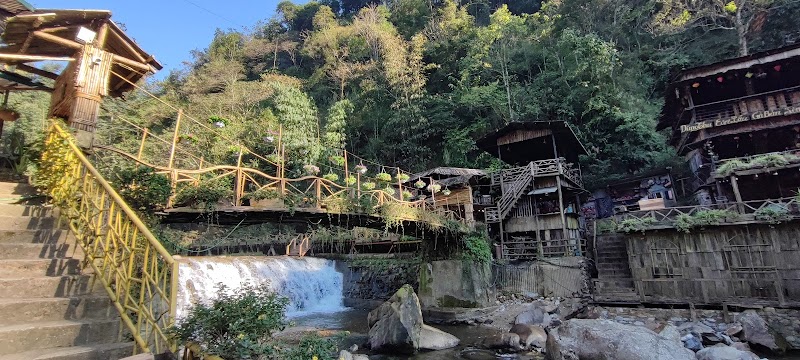Conquering Fansipan: Vietnam’s Roof of Indochina and Its Panoramic Heights
Fansipan, towering at 3,143 meters, challenges adventurers to scale the highest peak in Indochina. From dense forest trails to breathtaking summit views, this trek balances raw natural beauty with a demanding but rewarding climb.
Start Early to Avoid Weather and Crowds
Begin your hike at dawn for cooler temperatures, clearer skies, and a quieter trail before groups arrive.
Wear Sturdy, Waterproof Footwear
The trail’s rocky and sometimes muddy surfaces require solid grip and ankle support to prevent slips and injuries.
Bring Ample Hydration
Fansipan’s elevation and physical demands mean you’ll sweat steadily—carry at least 2 liters of water per person.
Prepare for Rapid Weather Changes
Pack layered clothing that can adapt quickly to the mountain’s cold, wind, and sudden rain showers.
Conquering Fansipan: Vietnam’s Roof of Indochina and Its Panoramic Heights
Rising sharply from the rugged peaks of northern Vietnam, Fansipan commands respect as the highest summit in Indochina at 3,143 meters. This mountain doesn’t just invite hikers—it dares them to navigate its challenging trails and claims a view that rewards every steady step. Located near Lao Cai city, the path to Fansipan’s summit threads through thick forests that push back with mossy roots and swirling mists, standing fiercely alive as you climb. The trek is a steady, undulating battle across 9 to 12 kilometers one way, depending on your route, demanding stamina as you ascend over 1,600 meters of elevation gain.
The terrain varies: expect steep, rocky sections where every foothold matters, alongside stretches of dense jungle where the relentless chatter of wildlife and rustling leaves keeps you company. Be ready for sharp weather shifts; the mountain breathes a cold, crisp air at the top, even in warmer months. Starting early is crucial—morning light cuts through the trembling forest and unveils glimpses of distant valleys, the kind of views that settle in your memory.
For those who seek a less grueling approach, a cable car service offers a modern concession to the mountain’s stubborn nature, ascending over 2,900 meters and cutting the physical strain dramatically while still delivering extraordinary vistas. Whether hiking or taking the cable car, Fansipan’s summit promises an uninterrupted panorama: the rolling Hoang Lien Son mountain range stretching beyond the horizon under skies that challenge your sense of scale.
Hydration and solid, grippy footwear are essential—the path can be both slippery and demanding, with river crossings daring your balance and sudden climbs pushing your endurance. Packing light but prepared with layered clothing allows you to respond flexibly to Fansipan’s temperamental weather. Trekking poles aid in steadying your rhythm on rougher sections, and a headlamp is smart for early starts or late finishes.
Fansipan doesn’t demand conquest—it requires engagement with a landscape fiercely itself, genuine and unchanged. This is an adventure both humbling and exhilarating, where physical effort returns multiplied in natural grandeur. It’s a mountain that waits to be understood, not just climbed.
Nearby Trips
All Adventures
Boat Charters
Water Activities
Adventures near Lao Cai
Discover the unique and memorable adventures that make Lao Cai special.
Frequently Asked Questions
How long does it take to hike Fansipan?
Most hikers complete the round trip in 7 to 10 hours, depending on fitness and pace. Starting early helps avoid afternoon weather changes and fatigue.
Is it necessary to hire a guide for Fansipan?
While the trail is marked, local guides can enhance safety, provide insights into the area’s culture and environment, and assist with navigation in poor weather.
Can I take a cable car to Fansipan?
Yes, the Fansipan Legend cable car is a comfortable alternative or addition to the trek, ascending over 2,900 meters and reducing physical exertion.
What’s the best time of year to climb Fansipan?
October to April offers the clearest weather and best visibility, with spring and fall balancing temperatures and trail conditions effectively.
Are there places to stay near Fansipan?
Lao Cai city and nearby Sapa town provide a range of accommodation options, from budget hostels to mid-range hotels, ideal for rest before and after the hike.
What wildlife might I see on the trail?
Expect to encounter diverse birdlife, including pheasants, and small mammals like squirrels. The forest is dense but alive with insect and floral diversity.
Recommended Gear
Trail-running or hiking boots
Provide grip and ankle support on varied, often slippery terrain.
Layered moisture-wicking clothing
Allows regulation of body temperature against Fansipan’s changing climate.
Trekking poles
Help maintain balance and reduce strain on knees during steep ascents and descents.
Headlamp or flashlight
Useful for early starts or if your descent extends into dusk.
Local Insights
Hidden Gems
- "Chua Linh Son Pagoda—quiet and atmospheric, tucked near the trailhead"
- "Silver Waterfall, where cascading currents dare your approach"
- "Hidden viewpoints overlooking Muong Hoa Valley away from main paths"
Wildlife
- "Red-shanked douc langur"
- "Golden pheasant"
- "Numerous rare orchids and endemic plant species"
History
"Fansipan has long been a sacred mountain for local ethnic groups, featuring in their rituals and legends. The summit holds a small stone pagoda symbolizing spiritual ascent and endurance."

